Passenger cars
Severe hybrid engine oil testing
20 May 2025
28 September 2021
New lubricants and standardised test methods will be required to meet the needs of this expanding powertrain segment

In the automotive industry’s quest for zero-emissions, the pace of vehicle electrification is accelerating and a new class of internal combustion engine technologies with hybrid powertrains is emerging. Infineum Industry Liaison Advisors, Andy Ritchie and Caroline Laufer, explore how these ‘electrified ICEs’ (e-ICEs) are increasingly creating a need for lubricants specifically designed to protect hardware, including new aftertreatment systems, and to handle special hybrid operating duty cycles.
The demise of the internal combustion engine (ICE) and switch to full battery electric vehicle (BEV) production is certainly one possible long-term outcome as the automotive industry works towards zero emissions. However, in the near-term, the vehicle powertrain production mix will be spread across many propulsion systems; from the conventional ICE-only, through various degrees of hybridisation, to full BEV and fuel cell electric vehicles.
Production of these hybrid vehicle types is projected to grow at a faster rate than BEVs in this decade. Taking a holistic approach to future hybrid powertrains, with multiple innovation options to improve and optimise their efficiencies, including the use of larger volumes of sustainable low carbon fuels, they may well present a viable challenge to the case for the BEV. This new class of e-ICE increasingly creates a need for lubricants specifically designed to protect the hardware, including new aftertreatment systems, and to handle the special hybrid operating duty cycles. In addition, standardised lubricant test methods will be required to meet the needs of the expanding e-ICE powertrain segment.
Five different types of vehicle electrification architectures are considered here, which comprise different ICE and motor propulsion mixes:
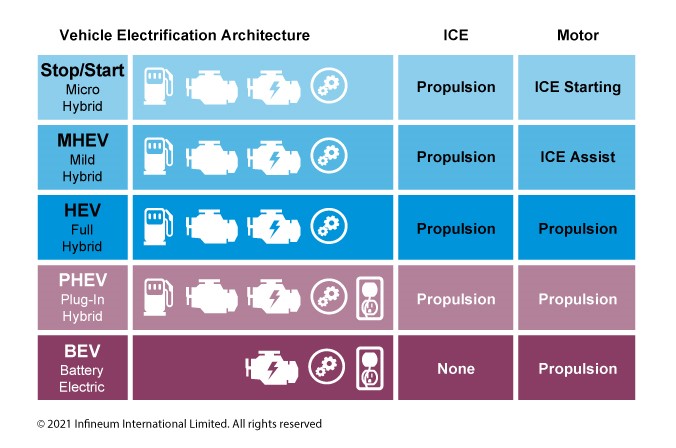
Forecasts through to 2028 vary widely on the uptake of the various architectures but show rapid rises in the production of both EV and the main hybrid powertrains.
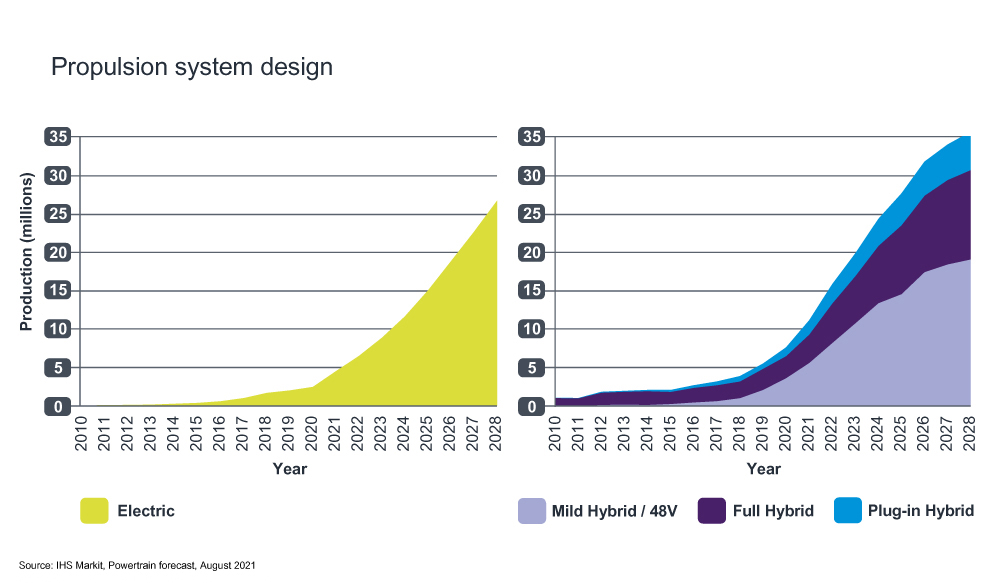
By 2028, the annual combined production of BEV and hybrids will be over 60% of the total, significantly outpacing ICE-only units, which includes the ICE Stop/Start (micro-hybrid) category. This latter category may shrink even further if the adoption of 48V powertrain architectures expands the mild-hybrid segment at the expense of the Stop/Start segment.
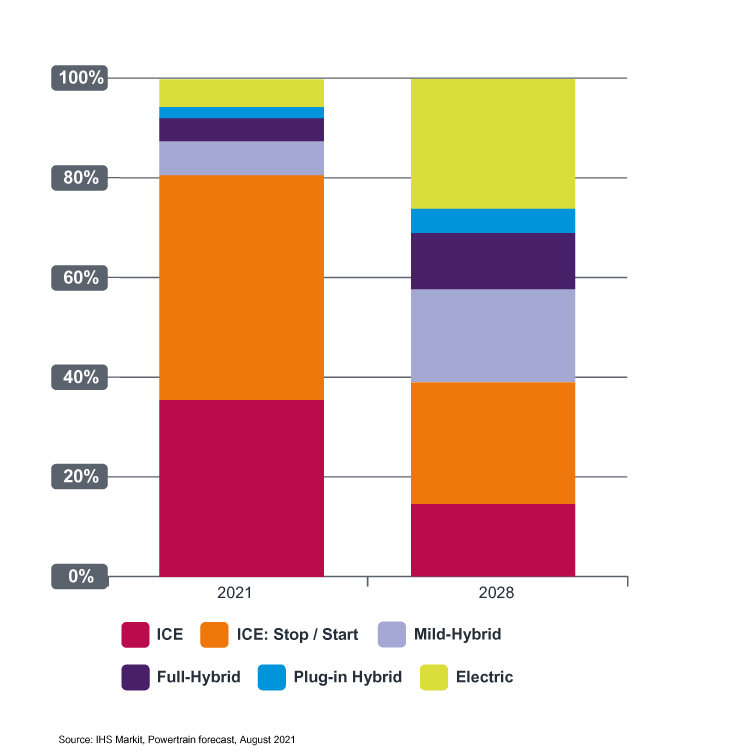
These projections, translate over the 2028 timeframe to a vehicle parc of almost 250 million units of Mild-, Full-, and Plugin- (MFP) hybrids, around twice the volume of projected BEVs. Fuel cell electric vehicle systems are expected to grow very slowly.
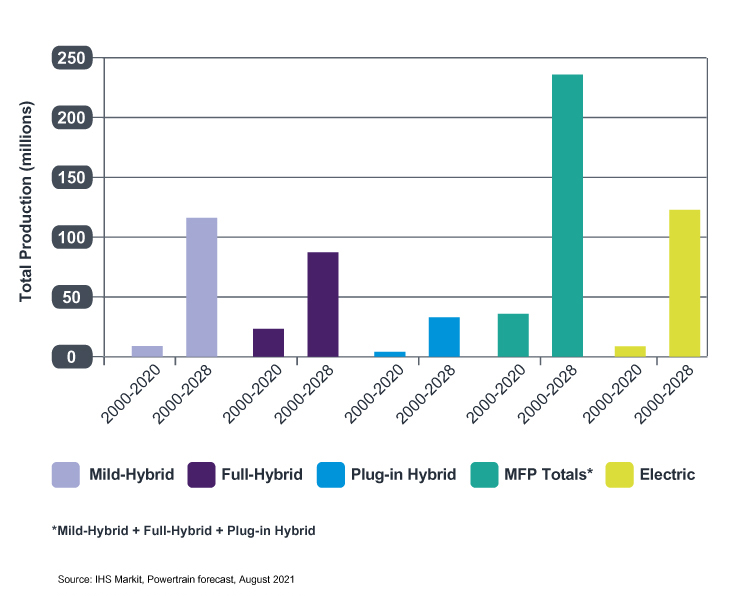
While the likelihood of an accelerated path to full electrification helps cement the view that the pace of ICE innovations will dramatically slow, there is a counter argument that a new generation of e-ICE (hybrid) powertrains will emerge. These will provide better solutions for the growing MFP hybrid segments, particularly if the ICE-only and e-ICE segments share these technologies and exploit synergies. Innovated e-ICEs for dedicated hybrid engines, delivering brake thermal efficiencies, which may approach 50% and meet tightening emissions targets will be paired with targeted hybrid duty cycles.
As the control of particulate counts and sizes becomes more important, it is now almost certain that MFP hybrids will require aftertreatment mixed brick combination devices comprising three-way catalysts, gasoline particulate filters, and possibly NOx and hydrocarbon traps. These innovative combustion engine – hybrid – aftertreatment (e-ICE-HAT) solutions will need to make the case for commercialisation over BEVs judged by the output of rigorous cradle to grave Life Cycle Assessments (LCAs). The increasing production of renewable and regenerative fuels to power these e-ICEs will strengthen the case for e-ICE-HATs over BEVs, placing them at the centre of future technology roadmaps, which include the ICE rather than eliminate it. A summary of the numerous opportunities for ICE hybrid powertrain hardware innovations provides an outline for a future technology roadmap.
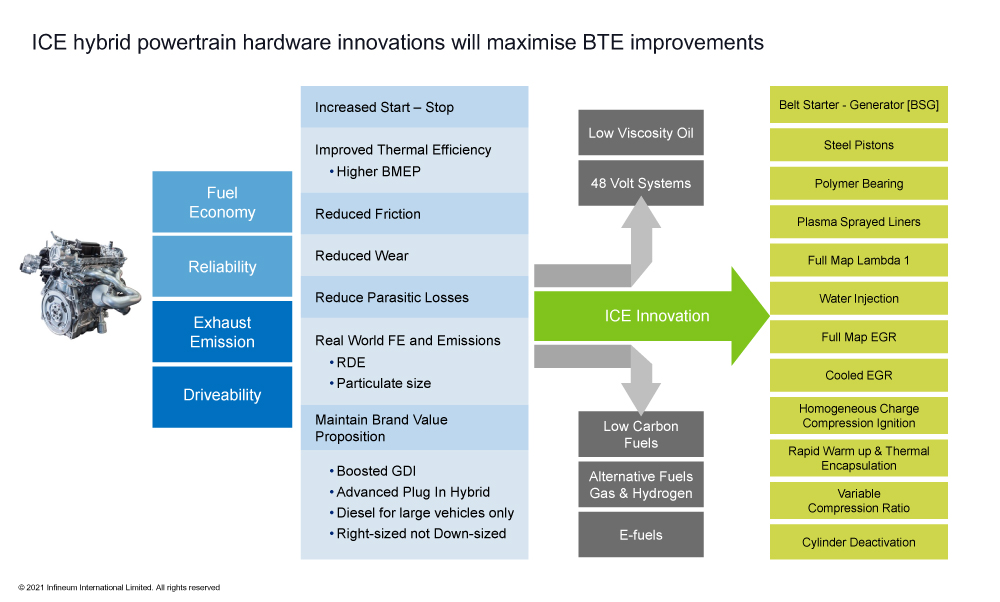 Innovative Combustion Engine – Hybrid – AfterTreatment (ICE-HAT) systems could be at the centre of a future powertrain technology roadmap
Innovative Combustion Engine – Hybrid – AfterTreatment (ICE-HAT) systems could be at the centre of a future powertrain technology roadmap
In summary, electrification enables ICE advancements (e-ICE) and the role of the lubricant is central to stretching the LCA application targets. This future generation of MFP lubricants can be thought of as e-Lubes if that helps move the discussion forward.
Clearly the wider adoption of MFP hybrid solutions would have a significant impact on future ICE innovations and production levels. This in turn would influence both crankcase lubricant demand and drive the need for a next generation of targeted lubricant formulations to satisfy the specific needs of such a rapidly growing ICE-HAT segment.

OEMs in the US generally recommend thinner viscosity grades for their MFP hybrid offerings, split between SAE 0W-20 API ILSAC GF-6 and the newer SAE 0W-16 API ILSAC GF-6B grades and API quality levels. However, none of the ASTM engine tests used to qualify lubricants for API specifications are designed to simulate the special hybrid duty cycles (HDCs), which the MFPs often operate under.
In Europe, ACEA has recently upgraded its light-duty specifications, which do not include any specific hybrid tests either. But, some European OEMs have recognised certain hybrid-specific issues and built tests into their latest specifications, with more believed to be on the table for consideration. While in China and Japan, the desire to incorporate specification requirements to protect hybrid vehicles into passenger car lubricants is also a serious topic of discussion.
Hybrid systems are different in their pattern of operating cycles. Full- and Plug-in hybrid powertrain operating modes can fall into two broad categories: charge depleting, where the battery state of charge (SOC) steadily falls, and charge sustaining, where the battery SOC is generally level. In charge depleting mode the ICE can stay off completely or supplement the power of the motor under certain driving conditions (typically high acceleration). In this latter ‘blended’ mode, the engine performs a number of high-power cold starts (HPCS). The engine operating conditions for HPCS are different to the significantly higher number of low-speed low-power (LPCS) urban cold starts, creating much more engine stress due to the rapid application of a high engine load. One growing concern with HPCSs, is the occurrence of particulate spikes, especially the concentration of very small <23nm particles.
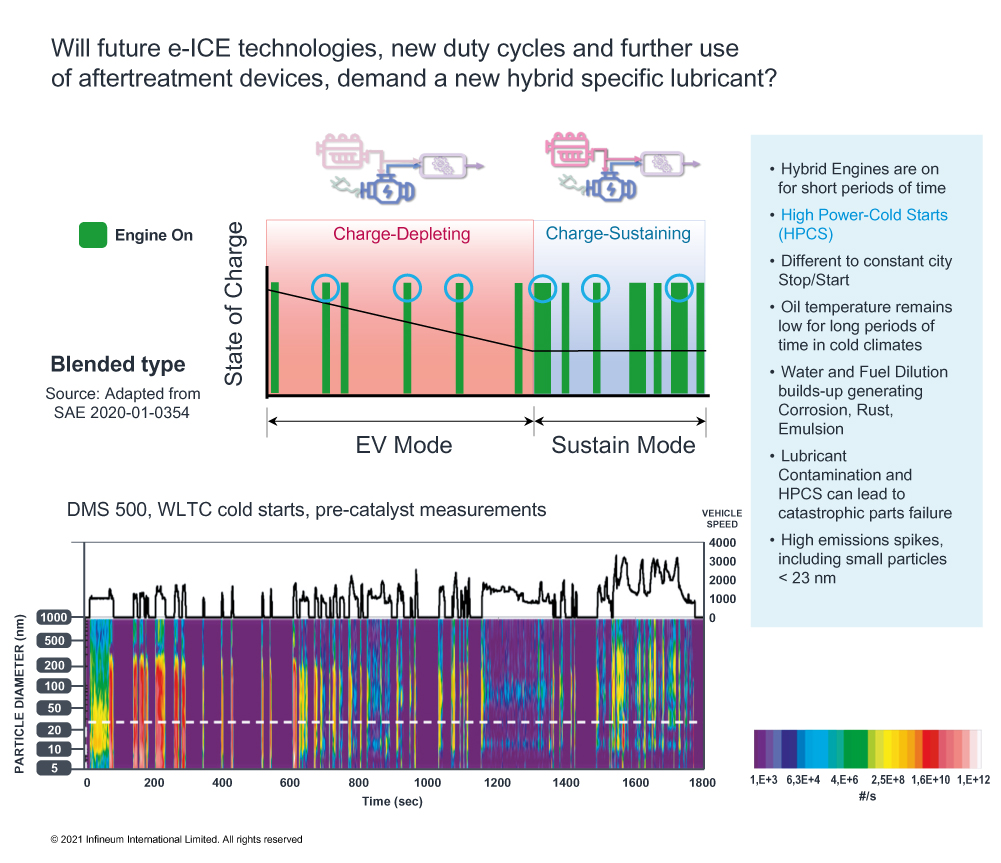
In both types of cold start the engine operates for short periods, keeping the oil temperature low, particularly in cold climates. For example, under the test conditions of the Worldwide Harmonized Test Cycle (WLTC), the oil temperature for an ICE-only vehicle generally rises to above 100oC by the end of the second part of the test cycle. However, for simulated WLTC tests with hybrid vehicles - the battery State of Charge varies - the oil temperature remains 20 to 40oC lower even after the final high power cycle because the e-ICE is off for a significant period of the full WLTC cycle.
In field cold operating conditions, particularly for Full- and Plugin- hybrids, the oil temperature will remain much lower for many short trips covering days or even months, perhaps within the rectangle indicated on the following chart.
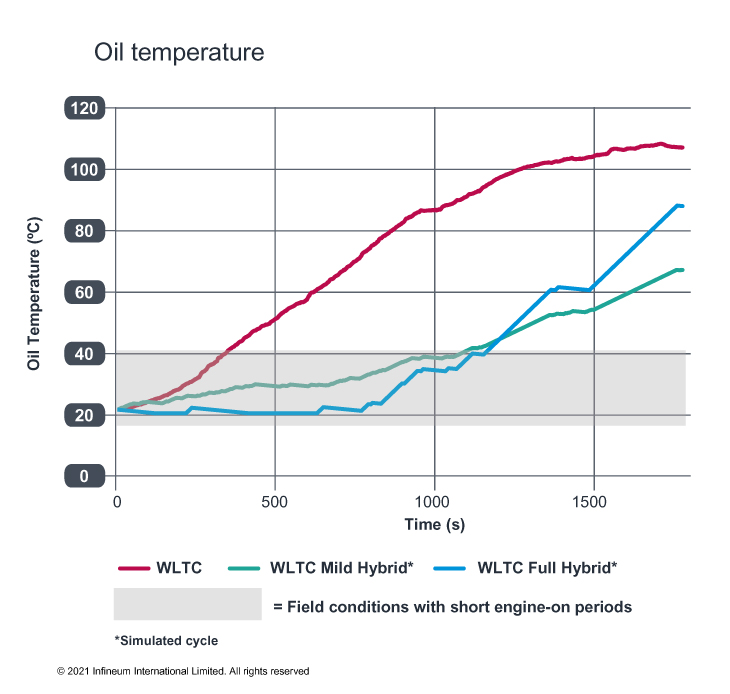
These persistent low oil temperatures create a number of issues for the lubricant that may impair its ability to protect the engine. Under these conditions, water and unburned fuel can accumulate in the crankcase and their levels can rise well above 10% each and promote the formation of different types of lubricant emulsions examples of which are shown below.
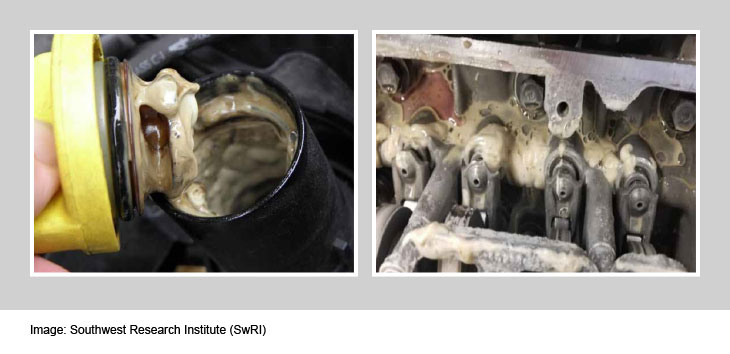 A build-up of fuel and water in the lubricating oil can create lubricant emulsions
A build-up of fuel and water in the lubricating oil can create lubricant emulsions
While the presence of emulsions is undesirable, the separation of the water from the lubricant creates an additional hazard to the engine. Not only can water from this separation result in corrosion and rust but also, in extended sub-zero temperature conditions, the water may collect in the bottom of the engine in the oil pan and form an ice block around the oil pick-up screen. On start-up this will starve the engine of oil and cause catastrophic engine failure.
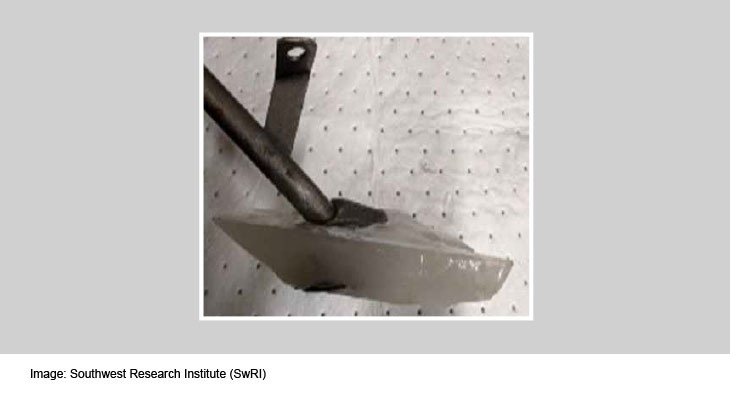 In sub-zero temperatures, water which separates from the lubricant can freeze and form an ice block around the oil pick-up screen
In sub-zero temperatures, water which separates from the lubricant can freeze and form an ice block around the oil pick-up screen
In addition to these high impact issues, water in the lubricant may cause a reduction in lubricant viscosity and loss of boundary lubrication. This could be a particular concern with the ultra-low viscosity grades such as SAE 0W-12s and 0W-8s that OEMs are increasingly recommending for these applications. Also, as a result of the build-up of both rust and corrosion deposits, issues related to increased noise vibration and harshness (NVH) can arise.
Finally, on top of the many potential lubricant contamination issues, high emissions spikes can also occur with the high pressure cold starts, which include a rise in the emission of very small particles less than 23nm.
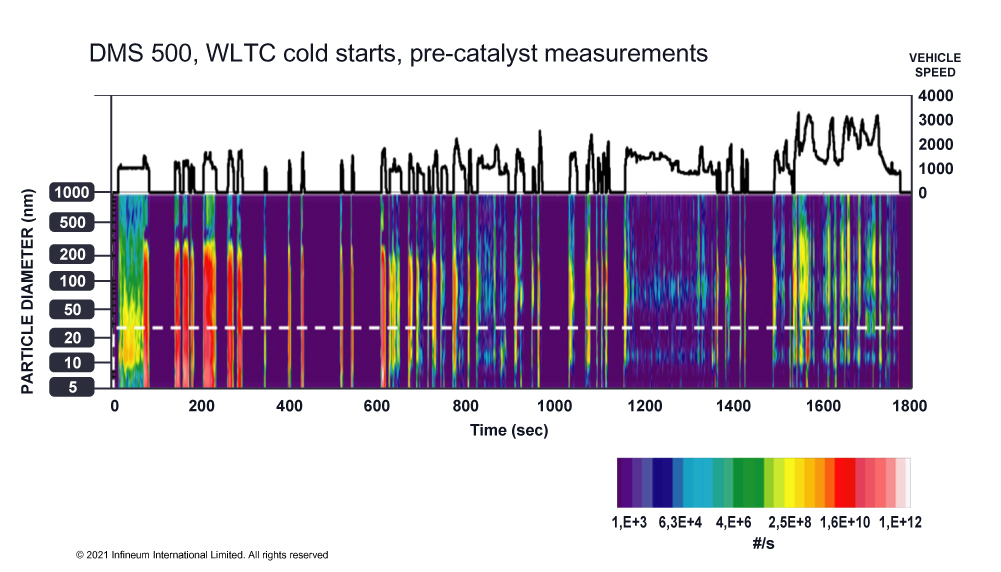 High emissions spikes can occur with high pressure cold starts
High emissions spikes can occur with high pressure cold starts
Clearly, hybrid duty cycles (HDCs) present unique challenges to the lubricant and future lubricants for MFPs will be more deeply embedded in the e-ICE hardware development process. However, as already noted, today’s hybrid vehicles rely on lubricants that meet specifications that were developed for ICE-only duty cycles. There is now a compelling case for test methods to be developed which can more closely simulate the HDCs. In particular, the effects of significant lubricant water and fuel contamination, the potential for increased wear and critical parts failure, as well as the risk of high emissions with cold starts must be measured by using meaningful test methods.
Across the world OEMs are recognising that hybrid duty cycles create specific issues that will need to be addressed by introducing new tests into their latest specifications. Infineum has a strong working knowledge of the parameters that influence performance in such specifications and has been engaged by a number of OEMs to share our insights. The best lubricants will emerge from these close partnerships and we look forward to working closely with the OEMs as new e-ICE powertrain lubrication challenges present themselves.
Sign up to receive monthly updates via email